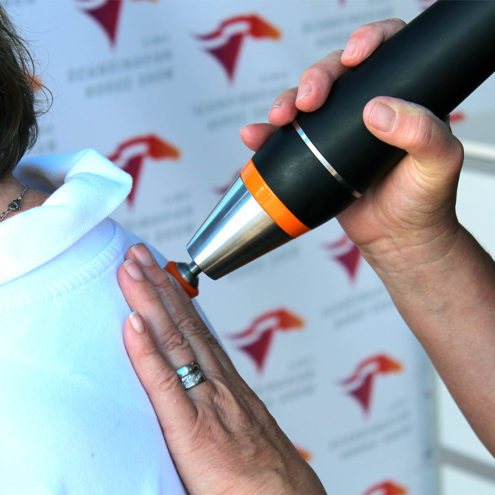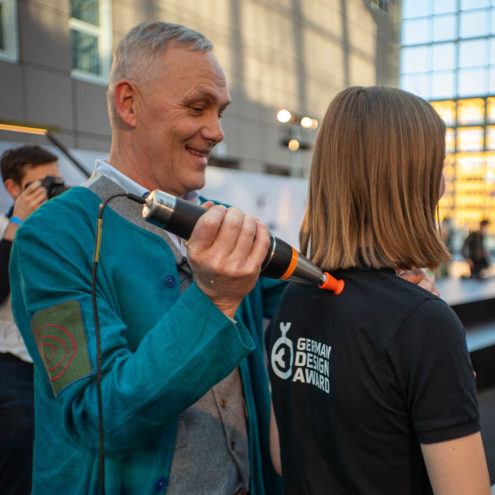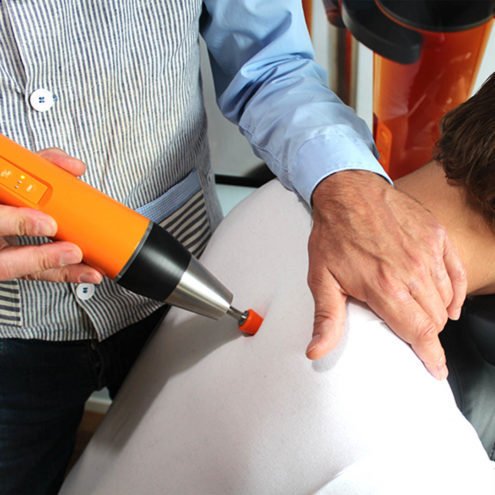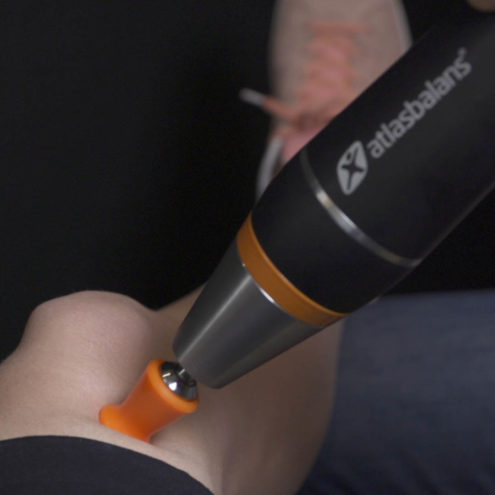Inflammation of the elbow joint

Elbow inflammation is a common condition that can affect people of all ages. There are several different factors that can cause elbow inflammation and it is important to use the right treatment method.
What is inflammation of the elbow?
Inflammation of the elbow occurs when the tissue in the elbow becomes irritated or damaged. It results in an inflammatory reaction with pain, swelling and sometimes reduced mobility of the elbow. One of the most common inflammations of the elbow is the well-known condition tennis elbow.
Symptoms of inflammation of the elbow joint
The symptoms of elbow inflammation can vary depending on the cause, but there are some common signs and symptoms to be aware of when you have inflammation in your body.
Early symptoms
Early symptoms of elbow inflammation may include mild pain or discomfort in the elbow, especially with movement or pressure. You may also notice some swelling or warmth around the elbow.
Continued symptoms
If the inflammation continues, the symptoms may become more noticeable. You may experience more intense pain and the swelling may become more obvious. You may also experience reduced mobility of the elbow and difficulty performing everyday tasks.
Severe symptoms
In severe cases, the inflammation can lead to constant pain, even when the elbow is at rest. You may also experience a significant loss of mobility and function of the elbow. In these cases, it is important to seek medical help.
What causes inflammation in the elbow?
There are several potential causes of inflammation of the elbow. It can be overexertion, trauma to the elbow and certain medical conditions.
Overuse and damage
One of the most common causes of elbow inflammation is overuse or injury. This can happen when you perform repetitive movements with your arm or wrist, or if you bump or hit your elbow hard.
Medical conditions
Certain medical conditions such as arthritis and gout can also cause inflammation of the elbow. These conditions can lead to long-term inflammation and may require specific medical treatment.
Other factors
Other factors that may contribute to inflammation of the elbow include age, genetics and general health conditions. For example, older people and those with certain genetic predispositions may be more likely to develop inflammation of the elbow.
Why do I have inflammation in my elbow?
Understanding why you have developed inflammation in your elbow can help you manage your condition and prevent future inflammation.
Risk factors
There are several risk factors for developing inflammation of the elbow. These can include having an occupation or hobby that involves repetitive movements with the arm or wrist, having a previous medical condition such as arthritis or gout, or having a history of injury to the elbow.
Lifestyle factors
Certain lifestyle factors can also increase the risk of inflammation in the elbow. These can include lack of regular exercise, poor diet, being overweight and smoking.
When and where should I seek treatment for inflammation of the elbow?
If you experience symptoms of inflammation in your elbow, it is important to seek medical help.
When to seek medical help
You should seek medical help if you experience constant or severe pain in your elbow, if you have significant swelling or if you have difficulty moving your elbow. You should also seek help if your symptoms do not improve after a week of self-care, or if they get worse.
Where to Find Help
You can seek help for inflammation of the elbow from a range of health professionals. These may include your family doctor, a physiotherapist, an orthopaedic specialist or a rheumatologist. These professionals can give you an accurate diagnosis, offer treatment options and advise on how to prevent future inflammation.
How is the treatment of inflammation of the elbow work?
Treatment for inflammation of the elbow will vary depending on the underlying cause of the inflammation.
If your symptoms are not severe, fascia treatment at Fasciaklinikerna can be a good way for your body to heal the inflammation in your elbow. The treatment increases the flow and balance in the body. This benefits the body’s own ability to heal itself so that pain and inflammation can be quickly reduced.
Medical treatment
Medical treatment may include anti-inflammatory and analgesic drugs and in some cases cortisone injections. If the inflammation is caused by a specific medical condition, such as arthritis or gout, other medicines may also be necessary.
Surgical options
For some people, surgery may be an option to treat inflammation of the elbow. This may include surgery to repair damage to the elbow, remove inflamed tissue or to correct underlying anatomical problems. Surgical interventions are usually only recommended when other treatment options have not been successful.
Rehabilitation and recovery
Rehabilitation is an important part of treatment for elbow inflammation. This can include physiotherapy to improve mobility and strength in the elbow, and learning new ways of performing activities to avoid causing more damage to the elbow. Self-care, including rest, ice and exercises at home, can also be part of your recovery.
Inflammation of the elbow – what can I do myself?
There are several things you can do at home to relieve symptoms of elbow inflammation and to help prevent future inflammation.
Home treatments
Home treatments for inflammation of the elbow can include rest, ice, compression and elevation. You can also use painkillers and anti-inflammatory drugs according to the instructions on the package. Performing light stretching and strengthening exercises can also help improve mobility and reduce pain.
Lifestyle changes
Lifestyle changes can also help prevent inflammation in the elbow. These can include avoiding activities that cause elbow pain, taking regular breaks from activities that involve repetitive movements with the arm or wrist, and maintaining a healthy weight.
Prevention
Preventive measures for elbow inflammation can include performing regular exercises to strengthen the muscles around the elbow. It is also important to use proper technique and equipment when performing physical activities. Seek medical help if you start to experience symptoms of inflammation in the elbow.
Inflammation of the elbow joint – frequently asked questions and answers
Here we answer some of the most common questions about inflammation of the elbow.
Is inflammation of the elbow common?
It is common to get inflammation in the elbow. There may be several causes involved.
What are the most common causes of inflammation of the elbow?
Most often, it is overuse or injury to the elbow that causes the inflammation.
How long does it take for inflammation in the elbow to heal?
The healing time depends on the cause of the inflammation.
What treatment options are there for inflammation of the elbow?
Physiotherapy and drugs are often used to reduce inflammation. In severe cases, surgery may be necessary.
Are there home treatments for inflammation of the elbow?
Home treatments for inflammation of the elbow can include rest, ice, compression and elevation. You can also use painkillers and anti-inflammatory drugs according to the instructions on the package. Performing light stretching and strengthening exercises can also help improve mobility and reduce pain.
How can I prevent future inflammation of the elbow?
Preventive measures for elbow inflammation can include performing regular exercises to strengthen the muscles around the elbow. It is also important to use proper technique and equipment when performing physical activities. Seek medical help if you start to experience symptoms of inflammation in the elbow.
Additional resources and links
https://fasciaclinics.com/se/behandling/bursit-armbage-behandling
https://fasciaclinics.com/se/behandling/falsk-tennisarmbage
https://fasciaclinics.com/se/behandling/tennisarmbage-behandling
 Search
Search


































